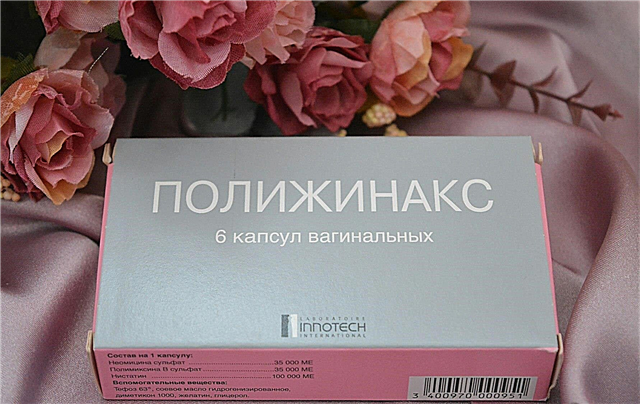
Funds with erythromycin in pharmacies can be found in various forms of release. Consider what drugs are allowed for children, and how they work.
Forms of release and composition
Erythromycin can be found in pharmacies in several forms.
- Pills, the shell of which dissolves in the intestine. They are manufactured by different pharmaceutical companies and are usually round and white in color. This "Erythromycin" is sold in blisters or jars of 10, 20 or more pieces.
- Eye ointment... Such a tool is produced in aluminum tubes containing 3, 5, 7 or 10 grams of a yellowish thick mass.
- Ointment for external use... It is similar to the eye in both its appearance and composition, but is sold in tubes of 15 grams.
- Lyophilisate, from which a solution for intravenous injections is prepared. It is a white porous mass placed in sterile 10 or 20 ml vials. One package contains 1, 5, 10 or 50 bottles.
Earlier it was also possible to purchase syrups and suspensions with erythromycin ("Ermidsed", "Ilozon", "Grunamycin"), but at the present time such drugs have been withdrawn from registration.
The main ingredient in all types of the drug is erythromycin phosphate, which is sometimes noted in the name of the drug. Its amount in one tablet can be 100, 200, 250 or 500 mg. The dosage of erythromycin in 1 g of eye ointment and ointment for skin treatment is 10,000 units. One bottle of lyophilisate contains it in a dose of 100 or 200 mg.
Accessory components differ depending on the shape. So, the lyophilisate, in addition to erythromycin, does not include any other substances, petroleum jelly, sodium bisulfite and lanolin are added to the ointments (some manufacturers also introduce methyl and propyl parahydroxybenzoate into the skin product), and tablets are made from talc, calcium stearate, povidone, starch and other connections.

How does it work?
Erythromycin is a group of macrolide antibiotics, therefore it is able to suppress the formation of proteins in microbial cells, which leads to the death of many pathogens - staphylococci, haemophilus influenzae, corynebacteria, clostridia, neisseria, mycoplasma, brucella, and so on. At a therapeutic dosage, such a substance usually has a bacteriostatic effect.
But if the pathogen is sensitive, and the dosage is high, the effect of erythromycin can also be bactericidal. Resistance to this substance is noted in gram-negative rods, including Shigella, Escherichia and Salmonella.
Indications
The reason for prescribing "Erythromycin" in tablets and injections is an infection caused by bacteria sensitive to such an antibacterial drug. Usually it is prescribed if the pathogen is resistant to antibiotics from the group of penicillin, streptomycin, tetracycline and chloramphenicol. The drug is used for whooping cough, diphtheria, scarlet fever, otitis media, angina, pneumonia, trachoma, sinusitis, streptoderma, brucellosis and other infectious diseases.
Eye ointment containing erythromycin is used for eye diseases caused by harmful microorganisms. This medicine is prescribed for conjunctivitis, blepharitis, trachoma. Some ENT doctors recommend lubricating the nasal mucosa with eye ointment. Such treatment can be prescribed for purulent rhinitis and adenoiditis.
Skin treatment with "Erythromycin ointment" for external use is in demand for juvenile acne, skin infections and purulent wounds.


Contraindications
The use of "Erythromycin" is prohibited in case of jaundice and impaired liver function, as well as in case of hypersensitivity to both the components of this medication and to other antibiotics, macrolides. There is no age limit for this drug - if necessary, it can even be prescribed to newborns.
Side effects
During treatment with "Erythromycin" in the form of injections and tablets, there may be negative effects on the digestive system, such as diarrhea, abdominal pain or nausea. Some children respond to the drug with tachycardia, liver problems, allergy symptoms, hearing loss, or candidiasis.
With injection, inflammation of the vein at the injection site is possible. After treatment with eye ointment, irritation, a local allergic reaction, redness, and decreased clarity of vision sometimes occur. Side effects of the drug for lubricating the skin are also allergies, and in rare cases, secondary infection develops (often with too long use).

Instructions for use
Dosages, the method of application of "Erythromycin", as well as the frequency of use of the antibiotic and the duration of the course of treatment depend on various factors, including the form of release, and the age of the patient, and the clinical picture. The treatment regimen necessary for a particular child must be determined by a doctor.
For infants of the first three months of life, the drug is prescribed in a daily dose of 20-40 mg for each kilogram of the baby's weight. Children over 4 months of age are prescribed Erythromycin in a dose of 30-50 mg per 1 kg per day. Having calculated the required amount of antibiotic, it is divided into 4 doses. The duration of therapy is 5 to 14 days. When the symptoms of the disease disappear, it is recommended to take "Erythromycin" for 2 more days.
After dilution with an isotonic sodium chloride solution, the injectable form of the drug is injected slowly into a vein for 3-5 minutes or a dropper is placed. The tablets should be taken either 2-3 hours after meals, or one hour before meals. Small amounts of skin lesions are treated with ointment, and erythromycin ointment is placed behind the lower eyelid.
The dosage of local forms, the frequency of lubrication and the duration of use are determined by the doctor.


Terms of sale and storage
To buy any of the forms of "Erythromycin" in a pharmacy, you need a prescription from a doctor, so a specialist examination is required. The average price of 10 coated tablets with a dosage of 250 mg is 60 rubles, a tube with 10 grams of eye ointment is 90-100 rubles, 1 bottle of lyophilisate with a dosage of 100 mg is 20 rubles.
It is recommended to store lyophilisate and ointment for external treatment in a dry place at temperatures from +15 to +25 degrees Celsius, eye ointment - at a temperature not higher than +15 degrees. The shelf life of erythromycin ointments and tablet form is 3 years, lyophilisate is 4 years.

Reviews
There are many good reviews about the treatment with "Erythromycin" in childhood. Among the advantages of the drug, the possibility of using it at a very early age is noted, as well as in situations where more common antibiotics do not help. After applying eye ointment, patients note that itching, purulent secretions and lacrimation disappear after a few lubrications.
Mothers of teenagers who used the ointment to combat acne also confirm its effectiveness in most cases.
The disadvantages of tablets are the need for frequent intake and a bitter taste. In addition, many children find it difficult to swallow this form of "Erythromycin", and side effects when using pills are not uncommon.

Analogs
If the child is prescribed Erythromycin tablets, but for some reason it is not possible to use them, the doctor can replace this form of medication with another antibiotic from the macrolide group, taken by mouth. This can be one of the azithromycin preparations, for example, capsules "Azitrox" or "Sumamed" suspension... A popular replacement for "Erythromycin" are antibacterial agents, the active ingredient of which is clarithromycin - "Klacid", "Fromilid", "Klasine", "Ecositrin" and others. No less popular and "Wilprafen" - an effective antibiotic containing josamycin.
For eye diseases, instead of "Erythromycin ointment", other local antibacterial drugs in the form of drops and ointments can be used. Among these drugs are "Gentamicin", "Signicef", "Levomycetin", "Vitabakt", "Levofloxacin", "Tobrex" and other means. If an ointment with erythromycin is prescribed for treating the skin, its analogs are "Zinerit", "Zerkalin", "Levomekol", "Baneocin", "Bactroban" and other medicines.





